Wondering how many different types of Husky dogs there are?
Well, that answer depends on quite a few factors, which we’ll discuss below.
We’ll also look at how the different “types” play a role in determining the right dog training strategy.
Then, we’ll figure out how to determine which one you have!
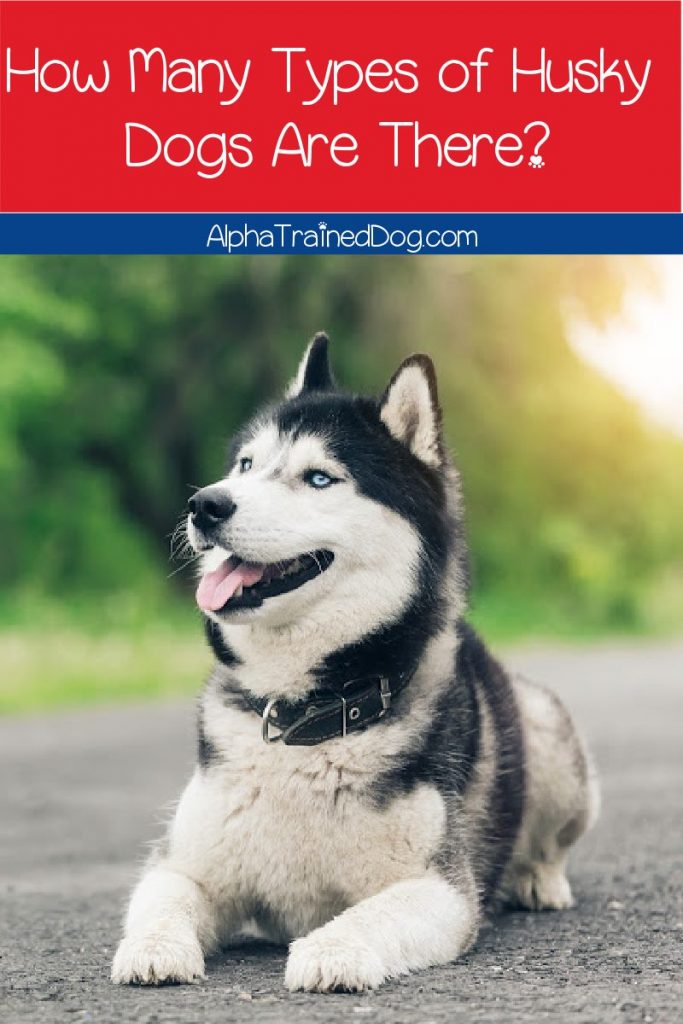
Table of Contents
How many types of Huskies are there?
How many different types of husky breeds are there? Well, that depends on what you mean by “types.”
Are we talking pure-bred Huskies? Mixed breeds?
Dogs that are commonly mistaken for Huskies but are actually something else entirely?
The answer is completely different depending on which question you’re asking!
Let’s start with the first one and work our way down, shall we?

Different Types of Pure-bred huskies
Ah, this one is simple! There is exactly ONE type of pure-bred Husky: the Siberian Husky.
That’s it. One.
So, if you see a list of 10+ different types of husky dogs, it either includes mixes or dogs that look like huskies.
I even saw a list that defined “Husky breeds” as literally any type of dog that pulls a sled!
If you go with that angle, I suppose you could find more than a dozen, but I want to give you the real answer to the question you came here for.
So, one it is!
But what about the Alaskan Malamute? Surely that’s a type of Husky!
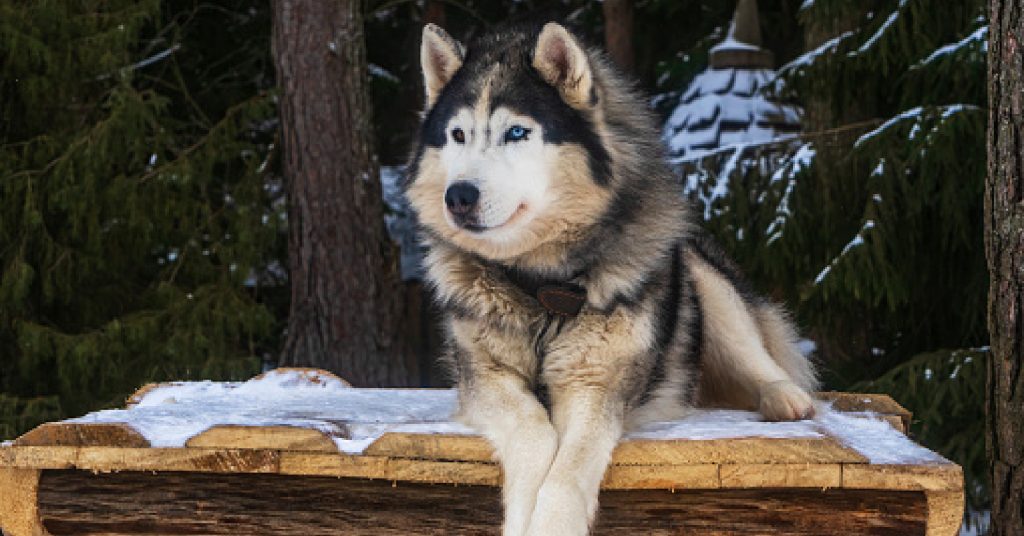
Nope. An Alaskan Malamute is an Alaskan Malamute. Totally different breed entirely.
Let’s compare the two, shall we?
| Trait | Husky | Malamute |
|---|---|---|
| AKC Group | Working | Working |
| Average Size | 20-22″ (female) 21-23.5″ (male) | 23″ (female)-25″ inches (male) |
| Average Weight | 35-50 lbs (female), 45-60 lbs (male) | 75 lbs (female) to 85 lbs (male) |
| Trainability | Somewhat stubborn, independent | Somewhat stubborn, independent |
| Temperament | Outgoing & friendly | Outgoing & friendly |
| Life Expectancy | 12-14 years | 10-14 years |
Two additional things that I couldn’t really fit on the table include coloring and origin, so let’s very quickly discuss those.
You can also check out this video:
Coloring
Huskies come in quite a few color combos, including black & white, brown & white, tan & white and even red & white.
Mals also come in a few varieties, including: black & white, blue & white, gray & white, and red & white.
Origins
Origin-wise, the AKC explains that the Malamutes are among the oldest Arctic sled dogs, with roots to the breeds that crossed the land bridge some 4,000 years ago.
Their name comes from the Mahlemiut people, an Inuit tribe native to the region.
Siberian Huskies, on the other hand, descend from sled dogs bred in Asia by the Chukchi.
The nomadic tribe needed a dog capable of pulling relatively light loads over a great distance.
Glancing over the table, it’s easy to see why these two dogs are so often confused for each other.
They’re roughly the same height, give or take.
They have very similar personalities when it comes to training and temperament traits.
They’re even part of the same group.
However, as you can see, the Malamute is a good 25 pounds bigger than the Husky.
As the AKC puts it: “Huskies are racers; Malamutes are freighters.”
Training Tips for Huskies
Husky training requires patience and dedication, as they are stubborn dogs with a fairly wide independent streak.
At first, you’ll teach your Husky the same basic manners and obedience skills as you would any dog.
The biggest challenges come later, when working on recall (basically, coming when called).
Huskies love to run and they’re total escape artists, which makes recall training so tricky.
It’s best to keep your dog on a leash and in a fenced-in yard, as very few Huskies are trustworthy off leash!
The AKC recommends keeping your training exercises fun, as a bored Husky is unlikely to listen.
Training Tips for Malamutes
Although they have similar trainability traits, Mals have an even longer stubborn streak than Huskies!
They can also be a bit pushier than Huskies, especially around kids.
Not mean, mind you (they love people in general), just pushy.
Early socialization is absolutely vital, as is basic obedience training.
Since Mals are so smart, if you stick with reward training strategies you shouldn’t have an issue teaching them the basics.
However, the AKC warns that it’s almost impossible to train Mals not to dig, so keep that in mind as you plan your fencing.
Who should own one of these dogs?
Both Mals and Huskies are great with kids and super sociable with just about anyone they meet.
However, given their stubborn nature and stellar escape skills, they may not be a great pick for first-time owners.
They’re also not a good option for apartment dwellers, as they need room to spread their proverbial wings.
Last, as social dogs, they don’t do well when left alone all day.
Since Mals are hardly the only “nope-not-a-Husky” dogs that pop up on “types of Huskies” lists, let’s discuss some of the others quickly.
Dogs That Are Mistaken for Husky Breeds
While the Mal is typically the most common dog mistaken for a Husky, like I said, there are others.
Let’s do a quick run down of each one. I’m only including AKC-recognized pure-bred dogs here (except for the last one)
I’m also leaving off dogs that are basically extinct, like the Karafuto (often called the Sakhalin Husky)
Samoyed
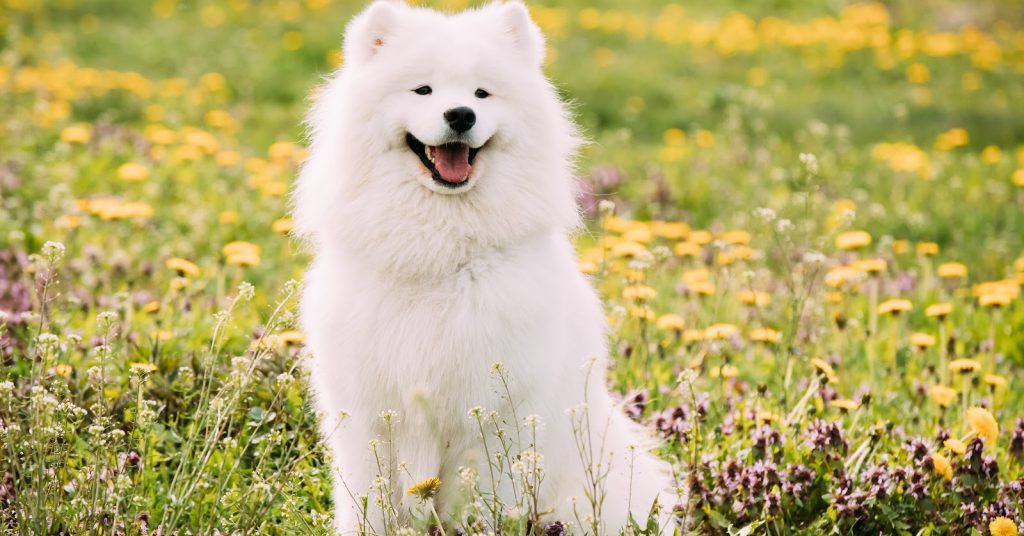
| AKC Group | Working |
| Size | 21-23.5″ (male), 19-21″ (female) |
| Weight | 45-65 lbs (male), 35-50 lbs (female) |
| Life Expectancy | 12-14 years |
| Color | White, Cream |
| Potential Health Issues | Hip dysplasia, eye & heart issues |
Origin
Samoyeds originated in the Siberian region of Asia, which is probably why they’re so often mistaken for a Siberian Husky breed.
Interestingly, they were originally bred to hunt reindeer until their people shifted gears and decided to herd Santa’s sled-pullers instead.
Health
Samoyeds are generally healthy dogs when bred by responsible breeders.
However, without proper testing of breeding stock, they can be prone to hip, eye, and heart issues.
Temperament
These are very friendly dogs with outgoing personalities. They love people and don’t do well on their own.
Like Huskies, they are fairly stubborn, though.
Training Tips
While all dogs do better with reward training, Samoyeds absolutely need this strategy to thrive.
They develop deep bonds with their people, and harsh punishments can absolutely devastate that bond.
Since they’re incredibly intelligent dogs, try mixing in some fun training games that challenge their minds as well as exercise their bodies.
Like Huskies, they have an urge to run free, so you’ll want to really focus on on-leash training and work on recall in case your Sammi gets loose.
Also, while the whole “alpha/dominance/pack” thing is essential a myth- or at the least a misunderstanding- Sammies are one of the few exceptions.
They work in packs, so they do tend to respect a hierarchy more than, say, a chihuahua bred specifically as a companion dog.
However, that doesn’t mean that you need to use archaic and cruel dominance training methods with them.
Again, just about all breeds learn best through positive training strategies.
Who should own one?
Samoyeds are great dogs as long as you have the time to devote to their needs.
They get along well with kids, although they’re not the best breed for very young children because of their energetic nature.
Since they are positively miserable on their own, they’re not a good dog to leave home alone all day.
American Eskimo Dog
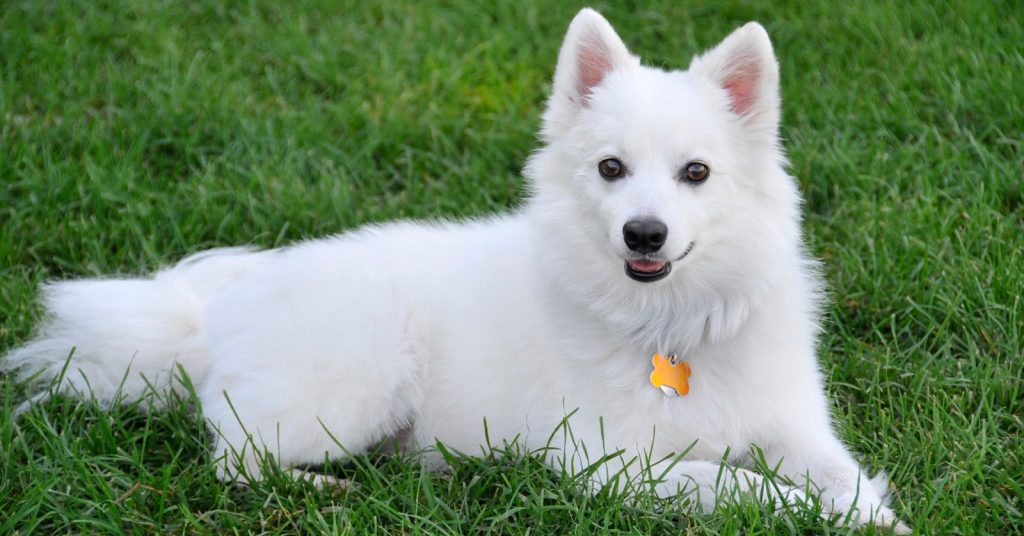
The American Eskimo Dog looks nothing like a Husky in my opinion, but it’s often thrown on a list of “types of Huskies,” so let’s discuss.
| AKC Group | Non-Sporting Group |
| Size | 12-15″ (or 9-12″ for toy) |
| Weight | 10-20 lbs (6-10 for toy) |
| Life Expectancy | 13-15 years |
| Color | White, White & Biscuit |
| Potential Health Issues | Progressive retinal atrophy, hip dysplasia |
Origin
The AKC points out that the name is actually totally wrong, as these dogs actually originate from Germany.
Their true name- German Spitz- was changed during the war, when we weren’t exactly kind towards anything German.
Fun fact- these dogs used to star in circuses!
Health
As with all breeds, they’re typically healthy as long as they come from responsible breeders.
Otherwise, they’re prone to hip problems and progressive retinal atrophy.
Temperament
These pint-size “not a Huskies” are as cheerful and outgoing as they look.
They’re sociable and get along well with just about everyone that they meet.
Unlike Huskies, they’re actually very eager to please, too!
Training Tips
Remember how I just said that American Eskimo Dogs used to perform in circuses?
Well, that should be a clue about how trainable they are!
Their outgoing personality coupled with their eagerness to please make them among the easiest-to-train breeds.
In fact, they practically learn through osmosis!
Seriously, the AKC says that they can even learn by watching other dogs do tricks.
Stick with reward training methods and your little Eskie will pick up new commands with no trouble at all.
Who should own one?
Everyone! These are wonderful little dogs that get along with kids, other dogs, and pretty much everyone.
However, as with the other “not-a-Huskies” on this list (and the actual Husky as well), they don’t do well on their own.
They also have fairly high exercise needs, so probably not the best dog for a tiny apartment.
Alaskan Klee Kai

| AKC Group | N/A (UKC lists them in the Northern Breed Group) |
| Size | 15-17″ for standard (see below for more) |
| Weight | 15-23 lbs for standard (see below for more) |
| Life Expectancy | 12-16 years |
| Color | Similar to Husky |
| Potential Health Issues | Congenital heart defects, liver problems, bleeding disorders, luxating patella |
The Alaskan Klee Kai isn’t yet recognized by the AKC.
However, since they’re really one of the few “nope-not-a-Husky” breeds that actually looks like a type of Husky, I have to include them.
The AKC calls them “Husky Lite” dogs, and that’s about as perfect a description as you’ll ever find.
They basically look like someone aimed a shrink ray at the Siberian Husky!
The Klee Kai actually comes in three sizes. Along with the standard above, there are toy and even miniature Kais.
Toy Klee Kais range from 13-15 inches and weigh between 10-15 lbs. Minis are under 13″ and 10lbs.
Origin
These relatively new dogs were bred around the 1980s for exactly what you probably think they were- to be pint-sized versions of the Siberian Husky.
They’re essentially designer dogs, but then again, pretty much all domestic breeds were “designed” by humans at one point or another, right?
They first gained recognition by the UKC in 1997. The AKC hasn’t yet added them to their list.
Health
As a relatively new breed, the Klee Kai has some fairly worrisome health issues that haven’t quite been “bred out” of them yet.
While breeders have all but eliminated a bleeding disorder that affected early dogs, a few have developed heart and liver issues.
As with all small dogs, they’re also prone to luxating patella (a knee problem).
Temperament
Klee Kais have quite a few personality traits in common with actual Huskies.
For one, they’re just as untrustworthy off-leash as their larger counterparts.
They’re also just as gabby as Huskies, so keep that in mind.
They aren’t big barkers per se. Like their “big brothers,” they just “talk” a lot.
Klee Kais are also very curious dogs, which can easily get them into mischief!
While sociable with their families, they’re reserved around strangers.
Training Tips
The Klee Kai needs early socialization, even more so than Huskies, to teach them to get along with kids and other pets.
They’re smart little pups, and like I said, they can get into trouble with their curiousity.
As reserved dogs, it’s super important to train them with positive reinforcement, otherwise you risk shattering your bond.
They’re also quite active, so make sure you include plenty of physical training games in your routine.
Who should own one?
Klee Kai are not ideal for people who want a super social dog that gets along with everyone he meets.
They are, however, perfect for families or single people with active lifestyles.
Just make sure you keep them on a leash during your adventures, as they are prone to escaping.
Types of Husky Mixes
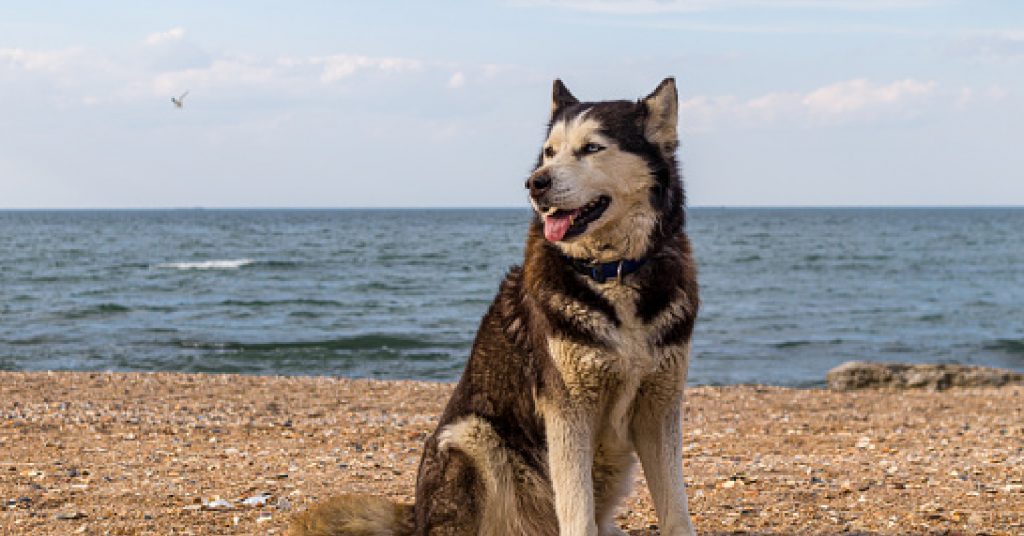
How many types of Husky mixes are there? Well, let’s see. Add up all of the dog breeds in the world and subtract one.
After all, you can’t really have a husky-husky-mix, right?
Seriously, the possibilities are endless, but let’s look at a handful of the most common.
FYI, the traits aren’t going to be as exact as those on the tables above, because there is no “breed standard” when it comes to mixes.
I basically averaged out the traits of the the two breeds (Husky + whatever).
| Husky + | Size | Weight | Life Span | Health Issues |
|---|---|---|---|---|
| Pomeranian | 13 to 18 “ | 20-30 lbs | 12-14 years | Hip, knee, eye, and thyroid problems* |
| German Shepherd | 20-25″ | 45-80 lbs | 10-13 | Hip & elbow dysplasia, cataracts |
| Labrador | 20-28″ | 60-100 lbs | 10-13 | Hip dysplasia., cataracts, arthritis, |
| Pug | 16-22″ | 30-60 lbs | 10-15 | Breathing problems, back problems, arthritis* |
I’d love to give you a detailed breakdown of the origins, trainability, etc of each combination, but we’d be here for a very, very long time. 🙂
It’s just impossible to tell you in a few short paragraphs about all the possibilities.
You and I could both get a Pomsky yet end up with completely different dogs entirely.
Your best bet is to join Facebook groups and talk to others who have the mix you’re interested in.
How do I know what kind of Husky I have?
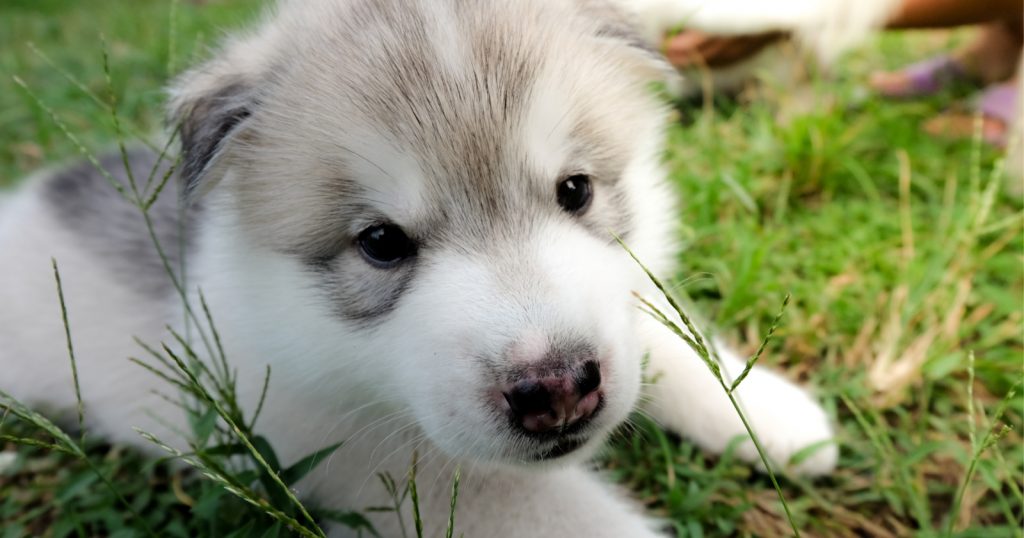
If you have an actual Husky and you bought him through a reputable breeder, you’ll get AKC papers.
What if you rescue a dog that looks like a Husky, or think maybe you have a mix?
In that case, DNA tests can tell you almost-definitively. Embark and Wisdom Panel are the most popular.
However, they’re not always 100% accurate, so keep that in mind.
Conclusion
Very long story short- while there are plenty of dogs that look like Huskies and plenty of dogs that pull sleds, there’s truly only one type of Husky that’s AKC-recognized.
Others- like the Labrador Husky (not a mix, but a “breed” from Labrador) or the Karafuto (Sakhalin Husky) are either almost extinct or so new that there aren’t really many out there.
Perhaps that will change in the future. New dog breeds pop up all the time, either through human or natural design. For now, though, the Siberian Husky remains one of a kind.

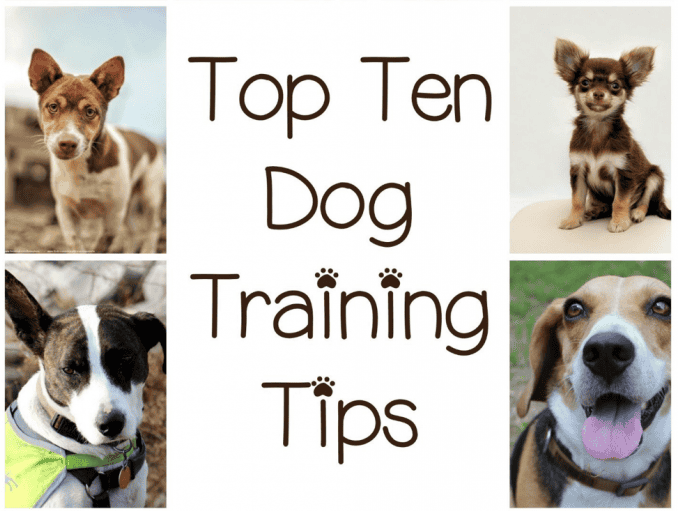
I love huskies and malamutes. They are both gorgeous breeds. I don’t know how some of the other dogs can be mistaken for a type of husky.
It’s actually pretty funny how many people mistake other dogs for huskies. There are tons of breeds out there though, and some just start to meld into others.
It’s amazing how many different husky dogs there are out there. My mother and sister in law both have huskies. They are such good dogs too.
Our husky will be 15 in January and we are preparing ourselves for the possibility of him not making it. He’s been a wonderful pet for our family.
This was very interesting to read. I had seen the other dog breeds before, but had no idea that they were different breeds of Husky. So cool to learn this today.
This is my daughter’s favorite breed. She will love reading this post!
What a great post. Huskies are beautiful. Maybe not a dog for our family. We have a neighbor that has one and it’s so sweet.